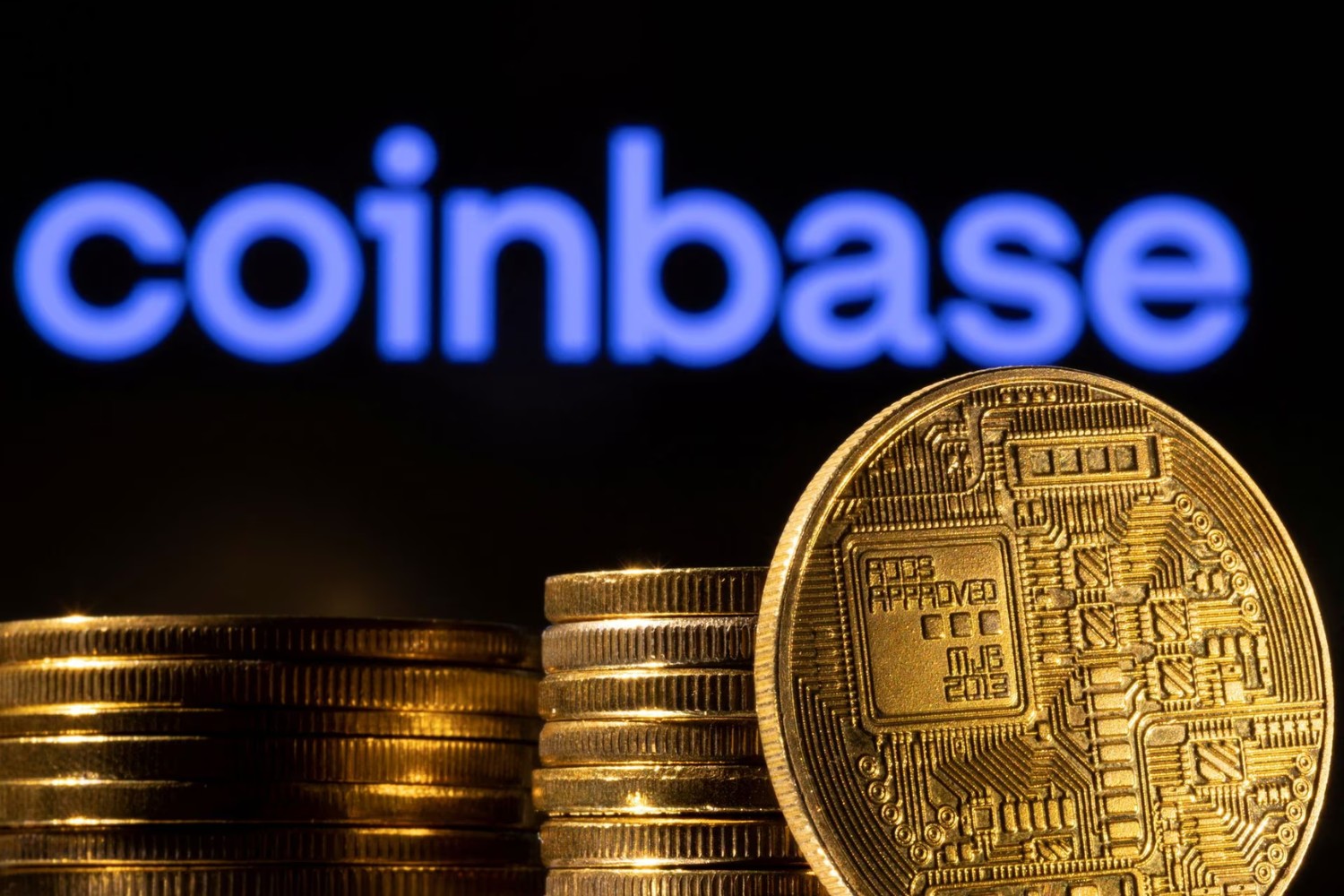Introduction
Cryptocurrency has gained significant popularity over the years, offering a decentralized and secure method for conducting financial transactions. While the potential for high returns in the crypto market is attractive, the volatility of cryptocurrencies has been a significant deterrent for many investors and users. This volatility introduces a level of uncertainty and risk that can hinder wider mainstream adoption.
To address this issue, the concept of stablecoins emerged as a solution. Stablecoins are a type of cryptocurrency designed to maintain a stable value, minimizing the fluctuations commonly associated with other cryptocurrencies like Bitcoin and Ethereum. By offering stability and reliability, stablecoins aim to bridge the gap between traditional finance and the world of cryptocurrencies.
In this article, we will explore what stablecoins are, how they work, their advantages and challenges, as well as their various use cases in the crypto market. We will also take a closer look at some popular stablecoins currently available to investors and traders.
What is a Stablecoin?
A stablecoin is a type of cryptocurrency that is designed to maintain a stable value by pegging its price to a specific underlying asset or a basket of assets. Unlike traditional cryptocurrencies such as Bitcoin or Ethereum, whose values can fluctuate wildly within short periods of time, stablecoins are intended to provide stability and minimize risk for users.
The value stability of stablecoins is achieved by linking them to assets like fiat currencies, commodities, or even other cryptocurrencies. The most commonly used stablecoin pegs its value to a fiat currency, such as the US dollar, at a 1:1 ratio. This means that for every stablecoin in circulation, there is an equivalent amount of fiat currency held in reserve. This ensures that the stablecoin always retains its value and remains stable even during periods of high volatility in the crypto market.
Stablecoins offer a middle ground between the benefits of cryptocurrencies and the stability of traditional financial systems. They combine the advantages of cryptocurrencies, such as fast and secure transactions, with the stability and confidence that come from being tied to a tangible asset.
Stablecoins are often used as a medium of exchange, allowing users to transfer funds quickly and efficiently without the risk of significant value fluctuations. They can also be used as a store of value, providing individuals and businesses with a reliable and stable digital asset that can be easily converted back into fiat currency if needed.
Overall, stablecoins serve as an essential tool in the crypto market, bridging the gap between the volatile nature of cryptocurrencies and the stability desired by users and investors. By providing a reliable and predictable value, stablecoins have the potential to facilitate wider adoption and usage of cryptocurrencies in various applications, such as e-commerce, remittances, and decentralized finance (DeFi).
How Do Stablecoins Work?
Stablecoins employ different mechanisms to maintain a stable value. The most common methods include the use of collateralization, algorithmic control, and a combination of both.
1. Collateralized Stablecoins: These stablecoins are backed by assets held as collateral. The most popular collateralized stablecoin is the fiat-backed stablecoin, where each stablecoin is pegged to a specific fiat currency, such as the US dollar. For example, the issuer of a stablecoin may hold one dollar in reserve for each stablecoin in circulation. This ensures that the stablecoin maintains its value by having the equivalent amount of a stable asset backing it. Other types of collateralized stablecoins may be backed by commodities like gold or by a basket of cryptocurrencies.
2. Algorithmic Stablecoins: Algorithmic stablecoins aim to maintain stability through smart contract algorithms. These stablecoins adjust their supply or interest rates based on the demand for the coin, in an effort to maintain a stable value. For example, if the value of the stablecoin starts to increase, the algorithm may decrease the supply by issuing fewer coins or increase the interest rates to incentivize users to hold or purchase more stablecoins. Conversely, if the value starts to decrease, the algorithm may increase the supply or decrease the interest rates to encourage selling or minting of new stablecoins.
3. Hybrid Stablecoins: Hybrid stablecoins combine both collateralization and algorithmic controls to maintain their stability. These stablecoins use a mix of assets held as collateral and smart contract algorithms to manage their value. The collateral provides a solid base value, while the algorithmic controls help to fine-tune the stablecoin’s supply and demand as needed.
In addition to these mechanisms, stablecoins may also employ other governance mechanisms, such as audits and regular reporting, to ensure transparency and verify that the reserves backing the stablecoin are sufficient. This helps build trust among users and investors, as they have assurance that the stablecoin is indeed backed by the declared assets.
Overall, the underlying mechanisms of stablecoins are designed to provide stability and reduce the volatility commonly associated with traditional cryptocurrencies. By maintaining a predictable value, stablecoins aim to create a reliable and widely accepted form of digital currency that can be used for various financial activities on the blockchain.
Types of Stablecoins
Stablecoins come in different types, each with its own method of achieving price stability. These types include fiat-backed stablecoins, commodity-backed stablecoins, crypto-backed stablecoins, and algorithmic stablecoins.
1. Fiat-backed Stablecoins: These stablecoins are pegged to a specific fiat currency, such as the US dollar, Euro, or Yen. The issuer of the stablecoin holds an equivalent amount of the fiat currency in reserve to back the stablecoin. The value of the stablecoin is maintained at a 1:1 ratio with the fiat currency it is pegged to. Examples of fiat-backed stablecoins include Tether (USDT), USD Coin (USDC), and Paxos Standard (PAX).
2. Commodity-backed Stablecoins: These stablecoins are backed by a physical commodity like gold or silver. Each stablecoin represents a specific amount of the underlying commodity. The value of the stablecoin is determined by the market value of the commodity it is tied to. Commodity-backed stablecoins provide a more tangible and stable backing for the value of the coin. Examples of commodity-backed stablecoins include PAX Gold (PAXG) and Digix Gold Token (DGX).
3. Crypto-backed Stablecoins: These stablecoins are backed by a basket of cryptocurrencies. The value of the stablecoin is maintained by holding a diversified portfolio of cryptocurrencies as collateral. This ensures that the stablecoin is not tied to a single cryptocurrency, reducing the risk of volatility. The specific mechanism used to maintain stability may vary depending on the crypto-backed stablecoin. Examples of crypto-backed stablecoins include Dai (DAI) and sUSD (Synthetix USD).
4. Algorithmic Stablecoins: Algorithmic stablecoins use smart contract algorithms to maintain stability. They do not have collateral backing like other types of stablecoins. Instead, the algorithm dynamically adjusts the supply and demand of the stablecoin to stabilize its price. The mechanisms used by algorithmic stablecoins can differ, but they typically involve an increase or decrease in the supply of stablecoins to influence the value. Ampleforth (AMPL) and Frax (FRAX) are examples of algorithmic stablecoins.
Each type of stablecoin offers a unique approach to achieving stability, catering to different needs and preferences within the crypto market. The choice of stablecoin depends on factors such as regulatory compliance, the level of trust in the stability mechanism, and the specific use case for which the stablecoin will be employed.
Advantages of Stablecoins
Stablecoins offer a range of advantages that make them an attractive option for users and investors in the crypto market. These advantages include price stability, fast and inexpensive transactions, global accessibility, and reduced counterparty risk.
1. Price Stability: The primary advantage of stablecoins is their ability to maintain a stable value. Unlike traditional cryptocurrencies that experience significant price fluctuations, stablecoins provide users with a reliable and predictable value. This stability makes stablecoins suitable for everyday transactions and serves as a store of value, allowing users to hold assets without the fear of rapid depreciation.
2. Fast and Inexpensive Transactions: Stablecoins operate on blockchain technology, allowing for fast and efficient transactions. Users can send and receive stablecoins within minutes, eliminating the need for traditional intermediaries and reducing transaction costs. This makes stablecoins particularly useful for cross-border transactions, as they can provide a faster and cheaper alternative to traditional remittance methods.
3. Global Accessibility: Stablecoins operate on a decentralized network, enabling global accessibility. Users around the world can transact with stablecoins without facing the limitations imposed by traditional banking systems. This accessibility promotes financial inclusion, allowing individuals in underserved regions to participate in the global economy and access digital financial services.
4. Reduced Counterparty Risk: Stablecoins eliminate or reduce the counterparty risk associated with traditional financial transactions. Smart contracts govern the issuance, transfer, and redemption of stablecoins, ensuring transparency and minimizing the risk of fraud or default. Additionally, collateral-backed stablecoins provide additional security by holding assets in reserve, enabling users to redeem their stablecoins for the underlying asset if required.
5. Investment Diversification: Stablecoins provide a stable and less volatile investment option within the crypto market. Cryptocurrency investors can use stablecoins as a way to mitigate risk and preserve capital during periods of market volatility. By converting their holdings into stablecoins, investors can avoid potential losses and quickly re-enter the market when they see favorable conditions.
In summary, stablecoins offer several advantages, including price stability, fast transactions, global accessibility, reduced counterparty risk, and investment diversification. These benefits make stablecoins a valuable tool for individuals, businesses, and investors seeking a stable and reliable digital asset in a volatile crypto market.
Challenges and Risks of Stablecoins
While stablecoins offer numerous advantages, they also come with their fair share of challenges and risks that need to be considered. These challenges include regulatory concerns, volatility of underlying assets, trust and transparency issues, and potential market manipulation.
1. Regulatory Concerns: Stablecoins, especially those backed by fiat currencies, face regulatory scrutiny due to their potential impact on the financial system. Governments and regulatory bodies are concerned about the potential for money laundering, terrorist financing, and lack of transparency associated with stablecoin transactions. As a result, stablecoin issuers must navigate complex regulatory frameworks to ensure compliance and maintain the trust of users and regulators.
2. Volatility of Underlying Assets: Stablecoins backed by cryptocurrencies or commodities can still be subject to the volatility of those assets. If the value of the underlying assets experiences significant price fluctuations, it can impact the stability of the stablecoin. This poses a risk as the stablecoin may not maintain its promised peg to the underlying asset, leading to a loss of value or system instability.
3. Trust and Transparency Issues: Users of stablecoins rely on the trustworthiness of the issuer and the accuracy of the information provided about collateralization, reserves, and audits. Lack of transparency or insufficient auditing practices can undermine confidence in the stability of stablecoins and impact their adoption. It is crucial for stablecoin issuers to maintain transparency, regularly audit their reserves, and provide verifiable information to build and retain trust among users.
4. Potential Market Manipulation: Stablecoins, especially those with a small market capitalization, are susceptible to market manipulation. It is possible for individuals or entities to affect the price of a stablecoin by either buying or selling a significant amount, creating artificial price movements. This can lead to a loss of confidence in the stability of the coin and affect its credibility as a reliable store of value.
5. Systemic Risks: The stability of collateral-backed stablecoins relies on the solvency and trustworthiness of the issuer. In the event of bankruptcy or misconduct by the issuer, there is a risk that the stability of the stablecoin is compromised. Users may not be able to redeem their stablecoins for their underlying assets, leading to potential financial losses and systemic risks within the stablecoin ecosystem.
Overall, while stablecoins offer numerous benefits, they are not without their challenges and risks. It is essential for users and investors to understand and carefully consider these risks when utilizing stablecoins and choose reputable issuers with transparent practices to minimize exposure to potential pitfalls.
Use Cases of Stablecoins
Stablecoins have a wide range of use cases within the crypto ecosystem and beyond. These use cases leverage the stability, speed, and transparency that stablecoins provide, offering various benefits to different industries and individuals. Some of the prominent use cases of stablecoins include:
1. Remittances and Cross-Border Payments: Stablecoins offer a quick and cost-effective solution for remittances and cross-border payments. Their fast transaction speed and low fees make them an attractive alternative to traditional payment systems. Users can send stablecoins to recipients in different countries, bypassing traditional intermediaries and avoiding high transfer fees and lengthy settlement times.
2. E-commerce: Stablecoins can be utilized in e-commerce platforms, providing users with an efficient and stable digital currency for online transactions. By using stablecoins, merchants can avoid the volatility risks associated with traditional cryptocurrencies, offering a stable and reliable payment method to customers. Stablecoins also enable seamless cross-border e-commerce transactions, eliminating the need for currency conversions.
3. Decentralized Finance (DeFi): Stablecoins play a vital role in the decentralized finance ecosystem. They serve as a stable unit of account and a medium of exchange within DeFi protocols. Stablecoins provide liquidity and allow users to participate in various DeFi activities such as lending, borrowing, and yield farming. Users can collateralize stablecoins to generate yield or use them as a stable asset to hedge against the volatility of other cryptocurrencies.
4. Tokenization: Stablecoins can be used to tokenize real-world assets, such as real estate, precious metals, and art. By issuing stablecoins backed by these assets, fractional ownership and transfer of value can be facilitated on the blockchain. This enables increased liquidity, efficiency, and accessibility to traditionally illiquid assets.
5. Hedging and Risk Management: Stablecoins provide a stable and reliable hedge against the volatility of the crypto market. Traders and investors can quickly convert their assets into stablecoins during periods of uncertainty or market downturns, preserving the value of their portfolio. Stablecoins also offer risk management options for businesses that deal with international suppliers, allowing them to lock in stable prices and avoid currency fluctuations.
6. Charitable Donations: Stablecoins can be used for charitable donations, ensuring transparency and accountability in the distribution of funds. The immutability and traceability of blockchain transactions enable donors to track the flow of funds and ensure that their contributions are used for their intended purpose.
These are just a few examples of the numerous use cases for stablecoins. As their adoption continues to grow, stablecoins are expected to play an increasingly significant role in revolutionizing traditional financial systems, expanding financial inclusion, and driving innovation across various industries.
Popular Stablecoins in the Crypto Market
The crypto market offers a diverse range of stablecoins, each with its own unique features and popularity. Some of the most widely recognized and utilized stablecoins include:
1. Tether (USDT): Tether is the most prominent and widely adopted stablecoin in the crypto market. It is pegged to the US dollar and maintains a 1:1 ratio. Tether is built on several blockchain platforms, including Ethereum and Tron, and is used across various crypto exchanges and decentralized finance (DeFi) protocols.
2. USD Coin (USDC): USD Coin is another popular stablecoin that is pegged to the US dollar. It is an ERC-20 token on the Ethereum blockchain and is backed by fiat reserves held by regulated financial institutions. USDC is widely supported by crypto exchanges, DeFi protocols, and platforms, making it a trusted and widely used stablecoin.
3. Dai (DAI): Dai is a decentralized stablecoin on the Ethereum blockchain and is maintained by MakerDAO, a decentralized autonomous organization. Unlike other stablecoins, Dai achieves stability through over-collateralization of Ethereum-based assets and algorithmic adjustments. Dai has gained popularity for its decentralized nature and use in DeFi applications.
4. TrueUSD (TUSD): TrueUSD is a fiat-backed stablecoin that aims to provide transparency and trust. It is pegged to the US dollar and is regularly audited to ensure the collateral reserves align with the number of TrueUSD tokens in circulation. TrueUSD has gained traction in the crypto market and is utilized in various decentralized applications and trading platforms.
5. PAXOS Standard (PAX): PAXOS Standard is a regulated and audited stablecoin pegged to the US dollar. It is built on the Ethereum blockchain and offers fast transactions and transparent auditing practices. PAXOS Standard is trusted by users and is widely supported by cryptocurrency exchanges and platforms.
6. Binance USD (BUSD): Binance USD is a stablecoin that is fully backed by US dollars held in reserve and approved by regulatory authorities. It operates on the Binance Chain and has gained popularity due to its association with the Binance cryptocurrency exchange. BUSD provides a secure and regulated stablecoin option for users.
These are just a few examples of popular stablecoins in the crypto market. It is important to note that the popularity of stablecoins may vary depending on the specific use cases and regional preferences within the crypto ecosystem. When selecting a stablecoin, it is crucial to consider factors such as trustworthiness, regulatory compliance, and liquidity to ensure a seamless and reliable experience.
Conclusion
Stablecoins have emerged as a crucial component of the crypto market, providing users with a stable and reliable form of digital currency. By addressing the issue of volatility that is prevalent in traditional cryptocurrencies, stablecoins enable wider adoption and facilitate various use cases in the digital economy.
Throughout this article, we explored the concept of stablecoins, understanding their definition, mechanisms, advantages, challenges, use cases, and popular examples. Stablecoins offer price stability, fast and inexpensive transactions, global accessibility, and reduced counterparty risk. These features make them viable for remittances, cross-border payments, e-commerce, decentralized finance (DeFi), tokenization, and risk management.
However, it is crucial to acknowledge the challenges and risks associated with stablecoins. Regulatory concerns, volatility of underlying assets, trust and transparency issues, and potential market manipulation are factors that need to be carefully considered.
In conclusion, stablecoins present a significant advancement in the realm of cryptocurrencies, providing stability and reliability to users and paving the way for broader adoption. As the crypto market continues to evolve and mature, stablecoins are poised to play a vital role in bridging the gap between traditional finance and the digital economy, offering stability, efficiency, and accessibility to individuals and businesses worldwide.

























